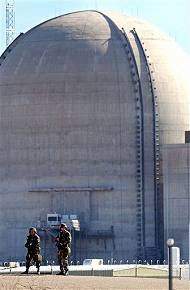Problem with reactor cooling system went undetected for 19 years
A potential problem with the emergency reactor
core cooling system at the nation's largest nuclear power plant went undetected
from 1986, when it began producing power, until last week.

A potential problem with the nation’s largest nuclear power plant went undetected from 1986, when it began producing power, until last week, the Nuclear Regulatory Commission and the plant operator confirmed Thursday.
The issue was identified when engineers at the Palo Verde Nuclear Generating Station did an analysis after NRC inspectors raised questions at a detailed inspection early last week. The NRC was following up to see if earlier cooling system problems had been fixed.
The review showed the emergency cooling system may not operate as expected to provide water to reactor cores after a small leak in the reactor cooling lines, NRC spokesman Victor Dricks said.
I worked for a vendor providing subsystem components for nuclear power plants back before most of our readers were born. 1950’s. The highest priority was making guaranteed profits for Westinghouse and GE. Better designs were ignored. Systems safety was perfunctory.
The worst-case scenario of an emergency cooling system failure is a meltdown of the reactor core and release of radioactivity into the atmosphere. Plants have many redundant systems, however, and many other failures would have to occur before that happened, nuclear experts said.
The design flaw put the plant outside of its licensing guidelines and operator Arizona Public Service Co. shut down the two operating reactors immediately until a fix is put in place. The third reactor in the complex 50 miles west of Phoenix was already down for maintenance and refueling.
There’s no estimate for when the plant will come back online.
The fact the potential problem took so long to be discovered should prompt the NRC to look at other plants and procedures, said David Lochbaum, a nuclear safety engineer for the Union of Concerned Scientists, a nuclear watchdog group.
Lochbaum said the Palo Verde plant has been a “stellar” performer until the past two years, when a series of problems have cropped up.
“It’s a fairly subtle problem, and it was a good catch by the NRC,” Lochbaum said of the current issue. “It just would have been a great catch sooner.”
Generating electricity via nuclear power still makes sound economic sense — minus the subsidies. Almost all the “acceptable” radioactive waste is the result of outdated designs. It makes scientific and environmental sense in the long view — with the addition of consistent, non-political, thorough quality control.
Thanks, Khalil
Posted: Sat - October 15, 2005 at 04:29 PM